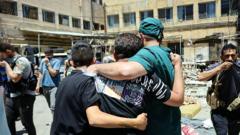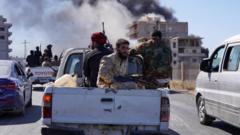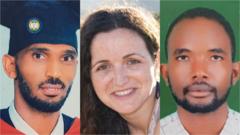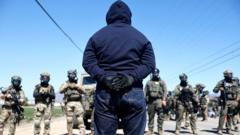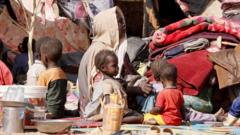Former inmates recount their harrowing experiences in secret detention facilities tied to former Prime Minister Sheikh Hasina's government, highlighting systemic abuse and a climate of fear in Bangladesh.
**Unearthing Bangladesh's Secret Prisons: The Haunting Legacy of an Ousted Regime**
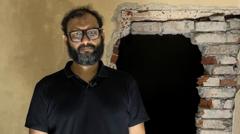
**Unearthing Bangladesh's Secret Prisons: The Haunting Legacy of an Ousted Regime**
Investigative reports reveal disturbing accounts from former detainees of clandestine cells near Dhaka's international airport.
In a shocking revelation, investigators in Bangladesh have unearthed a network of secret prisons, including a hidden facility located alarmingly close to Dhaka's International Airport. This revelation was made possible through the accounts of former detainees like Mir Ahmad Bin Quasem, who spent eight long years in captivity.
The hidden jail was brought to light when investigators discovered a bricked-up doorway leading to a small, windowless structure on a military base. Quasem, who was blindfolded for most of his time in custody, relied on the sounds of landing planes to guide his memory, ultimately aiding investigators in finding the location.
Quasem was one of many critics of the previous regime led by Sheikh Hasina, who faced mass protests that led to her ousting from power in August. According to reports, the elite counter-terrorism unit, the Rapid Action Battalion (RAB), operated under direct orders from Hasina, allegedly orchestrating enforced disappearances and unlawful killings.
Attorney and prosecutors, including Tajul Islam of the International Crimes Tribunal, have noted a systematic pattern of abuse, estimating that there might be hundreds of similar cells scattered across the nation. In their joint efforts to expose the truth, released inmates have spoken about the conditions they endured—dark, oppressive cells where time became indistinguishable, devoid of sunlight and fresh air.
Victims reported severe psychological and physical trauma: relentless beatings, torture, and a pervasive fear of retribution that looms over them even after liberation. Atikur Rahman Rasel, another survivor, described his detention experience, expressing his ongoing distress about potentially encountering his captors in public.
The actual numbers of those forcibly disappeared may surpass known records, with local NGOs documenting over 700 such cases. However, many detainees remain invisible, and while the military claims disassociation from the alleged illegal acts, the ongoing investigation suggests grave implications for the accountability of political leaders who oversaw these practices.
Despite their traumatic pasts, survivors like Quasem advocate for transparency and justice, insisting that exposing these atrocities is crucial for healing the nation. They demand a fair legal process against those responsible, emphasizing the importance of acknowledging history to prevent future violations.
Standing in the remnants of his prison cell, Quasem’s call for justice resonates closely with the broader need for Bangladesh to confront its tumultuous past on the path to democratic governance. Yet, for many survivors, including Rahmatullah, the psychological scars are deep. The lingering threat of violence remains ever-present, leaving them in a state of persistent fear as political turmoil continues to redefine their lives.


